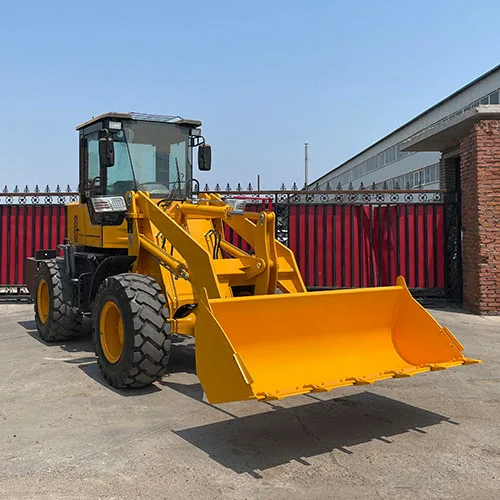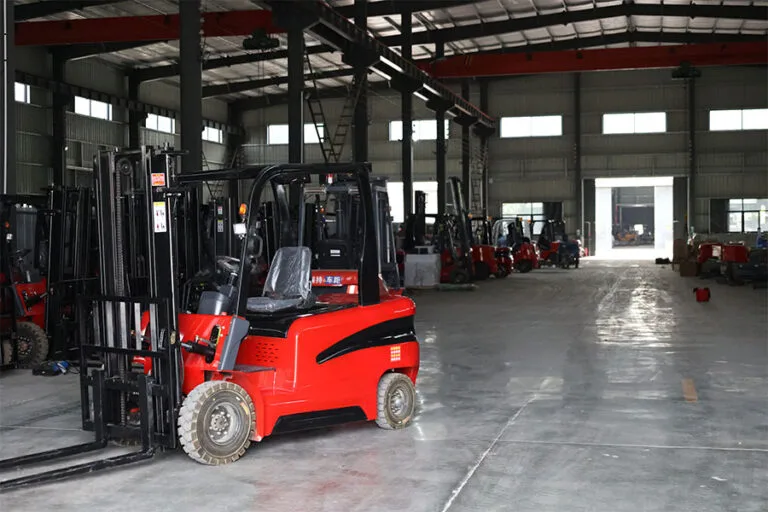I’m thrilled to have you here! Before we dive into the content, let’s stay connected. Join me on my social media platforms for more insights, community engagement, and regular updates. Here’s where you can find me:
📌 Facebook: Shandong Huaying International Trade Co., Ltd.
Now, let’s embark on this journey together. I hope you find the content here not only insightful and engaging but also valuable to your interests. Let’s learn, grow, and connect!
Table of Contents
Introduction

Backhoe wheel loaders are versatile, powerful machines widely used in construction, agriculture, landscaping, and other heavy-duty industries. These machines combine the digging power of a backhoe with the loading capacity of a wheel loader, making them highly efficient for various tasks such as excavation, material handling, and site preparation. However, operating a backhoe wheel loader is not without challenges. Operators must navigate a range of difficulties that affect machine performance, safety, and overall productivity.
In this comprehensive guide, we will explore four major challenges facing backhoe wheel loader operators today. From dealing with rough terrain and ensuring proper maintenance to addressing safety concerns and adapting to evolving technology, each section provides detailed insights and actionable advice. Understanding these challenges helps operators improve efficiency and reduce risks on the job site.
Challenge 1: Navigating Rough Terrain with a Backhoe Wheel Loader
The nature of the work sites where backhoe wheel loaders are used often involves uneven ground conditions, including rocky surfaces, mud, slopes, and loose gravel. Maneuvering heavy machinery over such terrain requires skill and attention to prevent accidents and equipment damage.
Terrain Challenges Specific to Backhoe Wheel Loader Operations
Unlike other construction equipment, backhoe wheel loaders must perform well in both digging and loading functions, often switching between these modes in complex environments. Rough terrain can cause instability, leading to tipping risks, decreased traction, and uneven wear on tires and components. Poor ground conditions also increase operator fatigue as constant adjustments are necessary to maintain control.
Techniques to Improve Handling on Rough Terrain
Operators should employ several strategies to improve machine stability and control:
- Adjusting Speed: Slower speeds on rough terrain reduce the likelihood of slipping or tipping.
- Using Differential Lock: Engaging differential locks enhances traction on slippery or uneven surfaces.
- Choosing Proper Tires: Tires with deep treads designed for off-road use help maintain grip.
- Positioning Load Correctly: Keeping loads low to the ground lowers the center of gravity and improves balance.
Importance of Site Assessment
Before operating a backhoe wheel loader, conducting a thorough assessment of the terrain helps identify potential hazards. Operators should mark areas of concern such as soft spots or steep inclines and plan routes accordingly to avoid unnecessary risks.
Challenge 2: Managing Maintenance and Downtime for Backhoe Wheel Loader

The complexity of backhoe wheel loaders means that maintenance is critical to ensure reliability and longevity. Equipment downtime can lead to significant delays, impacting project timelines and budgets.
Common Maintenance Issues with Backhoe Wheel Loaders
Regular use of these machines exposes them to wear and tear on several critical components:
- Hydraulic Systems: Leaks or contamination in hydraulic lines can reduce lifting power and control.
- Engine Components: Engines can suffer from overheating, fuel system issues, or oil contamination.
- Tires and Wheels: Frequent travel over harsh surfaces causes accelerated tire wear and potential damage to rims.
- Electrical Systems: Sensors, wiring, and controls require inspection to prevent unexpected failures.
Signs That Maintenance Is Needed
Operators should be vigilant for warning signs such as:
- Unusual noises or vibrations
- Sluggish hydraulic response
- Difficulty starting the engine
- Visible leaks or fluid drips
- Uneven tire wear
Preventive Maintenance Strategies
To minimize downtime, a proactive approach to maintenance is essential:
- Routine Inspections: Daily walk-around checks to identify problems early.
- Scheduled Servicing: Following manufacturer-recommended intervals for oil changes, filter replacements, and system flushes.
- Record Keeping: Maintaining detailed logs of repairs and service helps track recurring issues.
- Operator Training: Teaching operators to perform basic maintenance and spot signs of trouble improves response times.
Challenge 3: Ensuring Operator Safety While Handling a Backhoe Wheel Loader
Safety is, without a doubt, one of the most critical considerations when operating a backhoe wheel loader. These machines are powerful and heavy, often weighing several tons, which means any error in operation can have serious consequences. The risk factors operators face range from mechanical hazards to human factors like fatigue and distraction. Understanding these risks thoroughly and adopting comprehensive safety measures is essential to prevent accidents and injuries on the job site.
Common Safety Risks When Operating Backhoe Wheel Loaders
- Rollovers: Rollovers are one of the leading causes of serious injuries and fatalities in construction machinery operation. Backhoe wheel loaders are particularly vulnerable due to their high center of gravity and the challenging environments in which they operate. Uneven terrain such as slopes, trenches, or unstable surfaces can cause the machine to tip. Overloading the bucket or improper positioning while digging or lifting can further destabilize the loader.
- Crush Injuries: The moving parts of a backhoe wheel loader — including the backhoe arm, loader bucket, and articulated joints — pose significant crushing hazards. Operators and ground workers need to maintain constant awareness to avoid getting caught between moving components or under heavy loads. Additionally, failure to secure the machine properly during maintenance or parking can lead to accidental movement causing crush injuries.
- Blind Spots: Backhoe wheel loaders have large blind spots due to their bulky structure and limited window coverage. This restricted visibility increases the likelihood of collisions with other workers, vehicles, or site obstacles. Accidents caused by blind spots often happen in busy, crowded construction zones, where constant movement and noise distract operators.
- Improper Attachment Use: Using incorrect attachments or improperly installing tools such as buckets, breakers, or forks can compromise machine stability and control. Attachments that are too heavy or unsuitable for the task may cause strain on hydraulic systems or uneven weight distribution, heightening the risk of accidents.
Safety Best Practices
- Use of Rollover Protective Structures (ROPS): Modern backhoe wheel loaders are equipped with ROPS, which are structural safety frames designed to protect operators if the machine rolls over. Ensuring that ROPS are installed and well-maintained is a critical safety measure. Operators should also never remove or bypass these structures, even temporarily.
- Seat Belts: Wearing seat belts drastically reduces the risk of severe injury during rollovers and sudden jolts. Despite this, some operators neglect this simple but effective safety measure. Safety protocols must emphasize consistent seat belt use at all times while the machine is in operation.
- Regular Safety Training: Periodic safety training sessions help operators stay current with best practices and regulatory requirements. These trainings should cover safe driving techniques, hazard recognition, emergency procedures, and proper use of safety equipment. Incorporating hands-on simulation can improve learning outcomes.
- Communication: Using radios, hand signals, or spotters can significantly improve situational awareness and prevent accidents. In noisy environments, visual signals and dedicated spotters help guide operators when maneuvering in tight or complex areas, reducing the chance of collisions.
- Maintenance of Safety Features: Routine inspections should ensure that all safety-related components, including brakes, alarms, horn, lights, and mirrors, are fully functional. A malfunctioning safety feature can increase risks exponentially, especially in emergency situations.
Ergonomics and Operator Fatigue
Extended hours behind the wheel can lead to fatigue, reducing reaction times and concentration. Proper seat adjustment, breaks, and hydration are necessary to maintain operator alertness.
Challenge 4: Adapting to Technological Advancements in Backhoe Wheel Loader

Technological innovation has transformed backhoe wheel loaders with features designed to boost productivity, safety, and ease of use. However, adapting to these technologies presents challenges for operators.
Examples of Modern Technologies in Backhoe Wheel Loaders
- GPS and Telematics: Allow precise location tracking, route optimization, and remote diagnostics.
- Automated Controls: Assist in tasks such as digging depth control and load sensing.
- Fuel Efficiency Systems: Technologies that reduce fuel consumption and emissions.
- Enhanced Operator Interfaces: Touchscreens and digital dashboards provide better information.
Learning Curve and Training Needs
Operators must learn how to use these advanced systems effectively. Lack of familiarity can lead to improper usage or underutilization of features, negating potential benefits.
Supporting Operator Adaptation
- Hands-On Training: Practical sessions with new equipment increase operator confidence.
- User-Friendly Design: Manufacturers strive to make controls intuitive.
- Ongoing Support: Technical support and refresher courses help maintain proficiency.
Table: Challenges, Impacts, and Solutions for Backhoe Wheel Loader Operators
| Challenge | Impact on Operation | Recommended Solution | Benefits |
|---|---|---|---|
| Rough Terrain Maneuvering | Risk of tipping, reduced stability | Operator training, traction control | Improved safety and control |
| Maintenance and Downtime | Project delays, higher repair costs | Scheduled maintenance, inspections | Increased reliability, reduced costs |
| Operator Safety Risks | High accident rate | Safety training, ROPS, PPE | Lower injuries and fatalities |
| Adapting to New Technology | Operational errors, underutilized tech | Continuous education, user-friendly UI | Enhanced productivity and machine lifespan |
Conclusion
Backhoe wheel loader operators face multiple challenges that impact their efficiency, safety, and machine longevity. Successfully navigating rough terrain requires skill and proper equipment. Effective maintenance practices minimize costly downtime, while stringent safety measures protect operators and co-workers. Adapting to rapid technological advancements ensures that operators can fully leverage modern equipment capabilities.
Organizations that invest in thorough operator training, preventive maintenance, and safety programs will see improved performance and reduced risks. By understanding and overcoming these four major challenges, operators can maximize the potential of backhoe wheel loaders and contribute to the success of their projects.
FAQ
Q1: What are the main challenges when operating a backhoe wheel loader on rough terrain?
A1: Operators face risks of tipping and loss of traction. Techniques like reduced speed, traction control, and proper tire selection help mitigate these issues.
Q2: How can downtime due to maintenance be minimized?
A2: Following a strict preventive maintenance schedule and conducting daily inspections can catch issues early and reduce unexpected failures.
Q3: What safety equipment is essential when operating these machines?
A3: Rollover protective structures, seat belts, PPE, and communication devices are vital for safe operation.
Q4: How does technology improve backhoe wheel loader operation?
A4: GPS, telematics, and automation increase precision, efficiency, and help monitor machine health remotely.
Q5: How can operators keep up with new technology on backhoe wheel loaders?
A5: Regular training, hands-on practice, and manufacturer support are key to adapting to technological changes.



